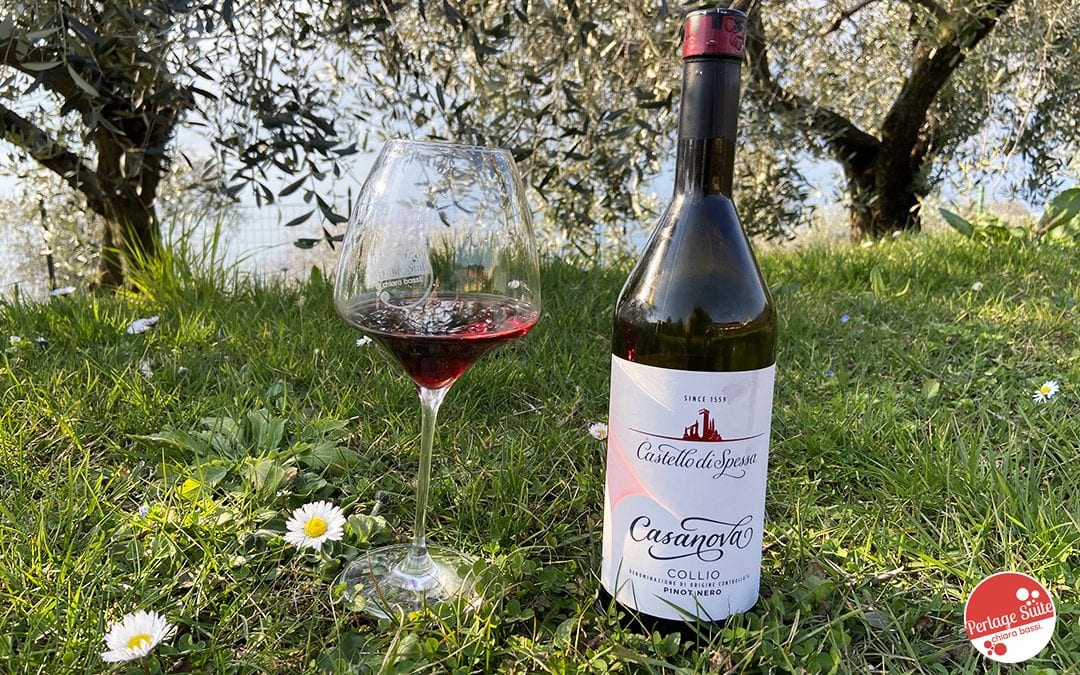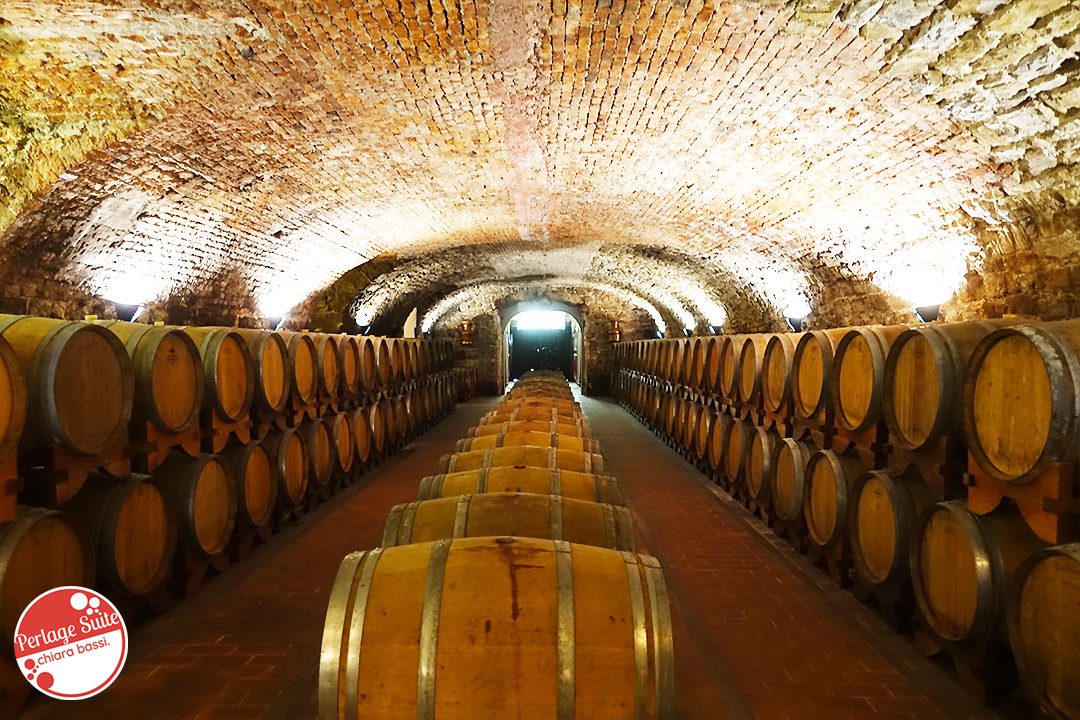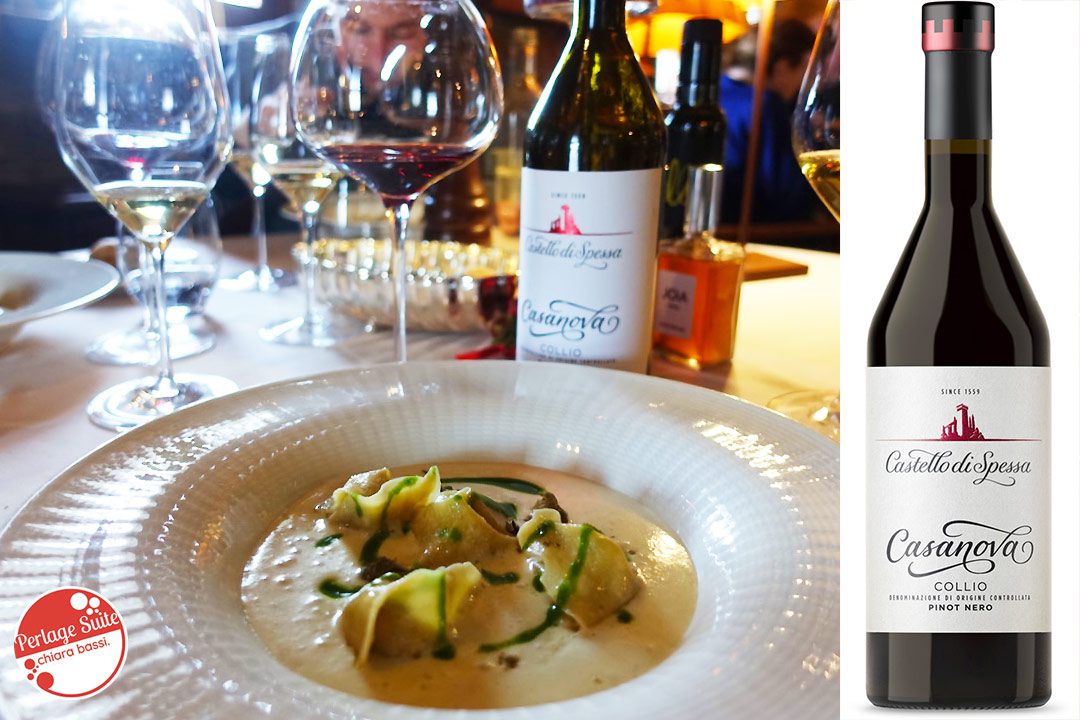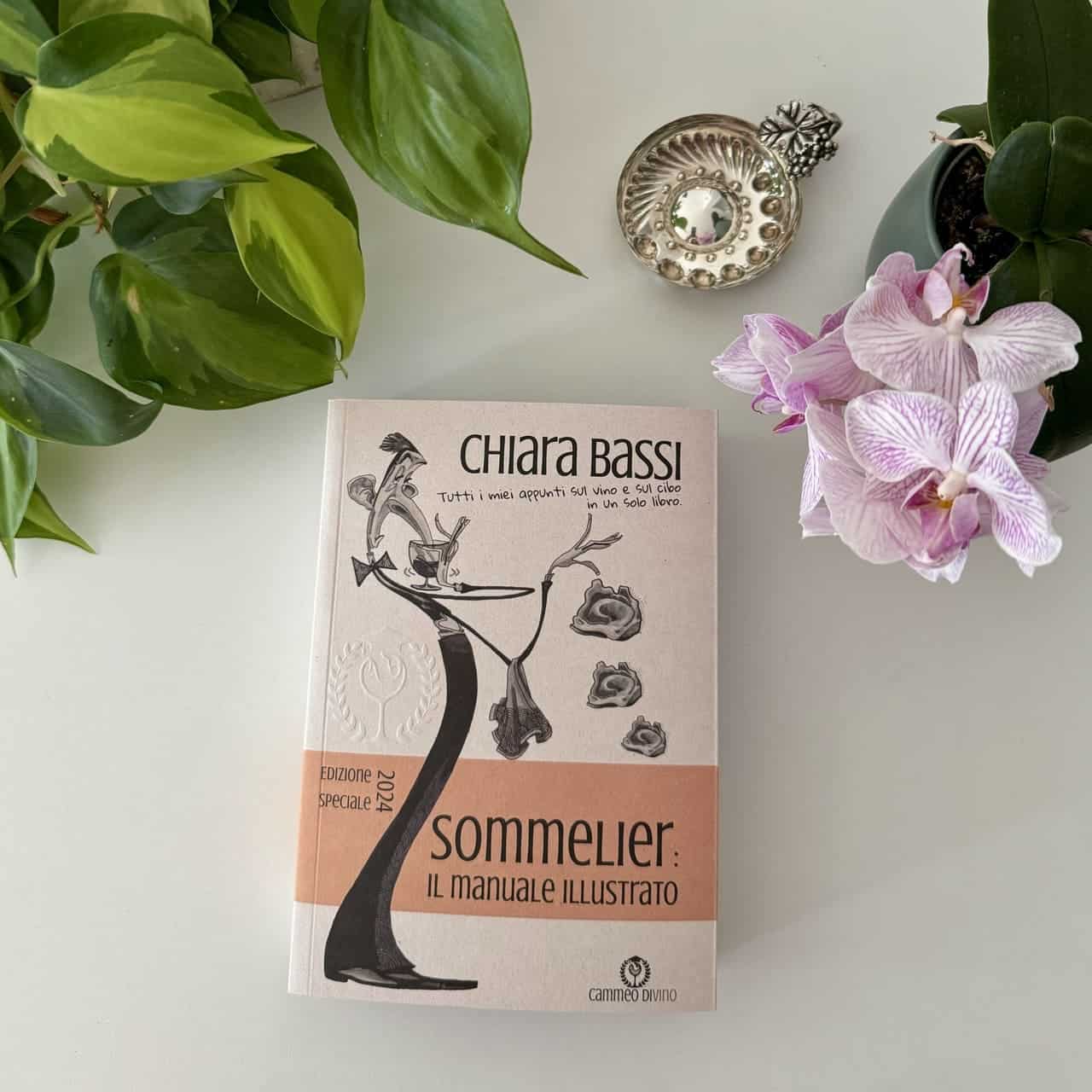This afternoon on ClubHouse I will give a short lecture on the pinot noir where I will tell you about this extraordinary and ancient international vine variety. I am happy to be involved in this little live programme every day because depending on what I uncork the night before, I can delve into a different grape variety and this is a very useful review exercise for me. Every sommelier should never forget that you never stop learning! So since last night I uncorked the "Casanova Collio Pinot Noir 2018 by Castello di Spessa Here I am today more seduced than ever to tell you something about the red grape variety I love most.
Introduction
Pinot noir is a difficult grape to cultivate and vinify because it requires both excellent soil and climate conditions and great precision in the vineyard and cellar. Moreover, it is a genetically unstable grape, i.e. it can mutate too easily, giving rise to other varieties. Just think of pinot blanc, pinot gris and pinot meunier, now considered as varieties in their own right, and of the thousands of existing clones of pinot noir.
Synonyms
Pinot noir is an international grape variety that is therefore pronounced in various ways depending on the language. In France, for example, it is called pinot noir. If, however, we want to analyse the other ways in which it is called or its synonyms, in German-speaking countries and in South Tyrol (for a change) it is called blauburgunder. You may find it under the name of black Burgundy, and this is very significant to underline how important a terroir has become in the image of a grape variety and vice versa.
The grape variety
Let us now briefly analyse the pinot noir plant, always with the fantasy of learning to recognise it at a glance in the vineyard. The leaf has a medium size and is rounded and trilobed. Its petiolar sinus, i.e. the one that connects it with the rest of the plant, has a pronounced shape that resembles a mix of the letters V and U. The upper page is dull dark green and is bullous. The underside is light green and arachnoid. In autumn, the leaves turn a beautiful bright red colour.
The cluster at industrial maturity is shaped somewhat like a pine cone and is rather small and short, always less than 15 cm long. It has a compact cylindrical shape and is often winged. The berry is medium-sized and tends to be oval in shape. The skin is thick, consistent, blue-black in colour and very pruinose. Each berry has 2-3 very small pyriform (i.e. pear-like) seeds.
Pinot Noir characteristics
The pinot noir plant has an average budding and flowering, while veraison is a bit early. Vigour is good and production is fair, but care must be taken as it is quite susceptible to rot.
Now subscribe to the newsletter or scroll down the page to continue reading the article.
Where is it grown in Italy and around the world?
In Italy, it is cultivated practically everywhere except in Calabria and Liguria, although with very different results.
Burgundy is the land of pinot noir and has been cultivated here for more than 2000 years, as some rediscovered testimonies tell us. The Côte d'Or in particular gives us the most elegant and exciting wines, absolute masterpieces.
What types of wines are produced?
Pinot Noir is particularly suitable for white or red sparkling wine and red wine vinification. Particularly in red wine vinification, pinot noir is processed purely and hardly ever blended with other grapes.
The use of wood, especially a large cask or a second passage barrique that does not excessively release toasty notes, is highly recommended to improve the wine's balance, thanks also to the tannins released by the cask.
Longevity is very variable and let's say it is proportional to quality. It ranges from a couple of years for mediocre pinot noirs to 10 years for excellent ones. If we are lucky enough to have a Burgundy cru in our hands, we can get excited even 20 years later.
Pinot Noir: characteristics of the wine produced
Talking about the characteristics of the wine produced is impossible given the different vinifications. So I would say to distinguish in two categories: pinot noir vinified as a classic method sparkling wine and pinot noir vinified in red.
Pinot Noir elaborated as a classic method sparkling wine, whether blanc de noir or rosé, tends to be a very structured sparkling wine with fruity and spicy aromas and excellent persistence in the mouth. Moreover, as it has a great capacity for ageing, it can cause sparkling wines to age on the lees for several years, taking on increasingly complex notes.
Pinot Noir made into red wine varies greatly from area to area, but let's say we can channel it into two macro categories: Pinot Noir suitable for drinking young and Pinot Noir elaborate for long ageing. The former are fresh, basically light. The latter are complex, structured and almost powerful, without forgetting that pinot noir is certainly not a Bordeaux blend, but it is still a lighter, finer and more elegant wine.
Pinot Noir: How to pair it?
As always, I don't agree to lump all wines together because differences in terroir and processing can give very different wines... not to mention the abysmal difference between classic method sparkling wine and red wine making. In general, however, I can say that pinot noir is a very versatile grape variety in terms of pairings precisely because of its finesse and 'rough' elegance, which are characteristics of any type of wine produced. I like to pair it with fatty barbecued fish such as eel, with fatty meats such as goose or savoury meats such as lamb or mutton, with home-made preserves in oil such as agon and with delicate blue cheeses such as blue goat cheese.
Pinot Noir/9: some famous wines...
Burgundy is the land of pinot noir because it achieves incredible expressive results here. In my experience, the pinot noirs from this area oscillate between a softer and an edgier approach, even though they are united by the skilful use of the barrique, which gives spicy and toasted notes.
North-eastern Italy is another highly vocated area, in particular Alto Adige gives us some very elegant wines from pinot noir grapes, if we think of red wine making. However, we must not forget that its area of excellence is the Oltrepò Pavese, where it is used for classic method sparkling wine making. In Italy it is also cultivated with good results in Lombardy where it is particularly appreciated vinified in white as a sparkling wine base for the production of the famous Franciacorta DOCG.
Pinot noir/10: A few good pinot noirs I have had recently...
Today I thought I would tell you about pinot noir precisely because last night I tasted one that was nothing short of wonderful. Last year I spent an incredible Valentine's Day at Castello di Spessa and tasted several of the winery's wines, including the Casanova, which is their Pinot Nero del Collio. I had already fallen in love with it then, but I have to tell you that last night I found thecrazy 2018 vintage. So here are my tasting notes. It has a beautiful transparent ruby red colour and swirling it in the glass showed me a certain consistency. On the nose it is charming and elegant and has all those spicy notes that excite me in pinot noir. I recognise black pepper, pink pepper, solvent, criollo chocolate, rhubarb and walnut. In the mouth it is consistent, fresh, savoury, with nice tannin and a persistence of toasty nuances.
In this photo a combination that I still have in my head as if it were yesterday: cod ravioli mantecato on caper air and Casanova in the restaurant Tavernetta al Castello (which I have mentioned HERE).
I look forward to returning to Spessa Castle (HERE the reportage of one of the most beautiful weeks of my life)... thank you very much for inspiring me to learn more about this extraordinary grape variety.
Cheers 🍷
Chiara




